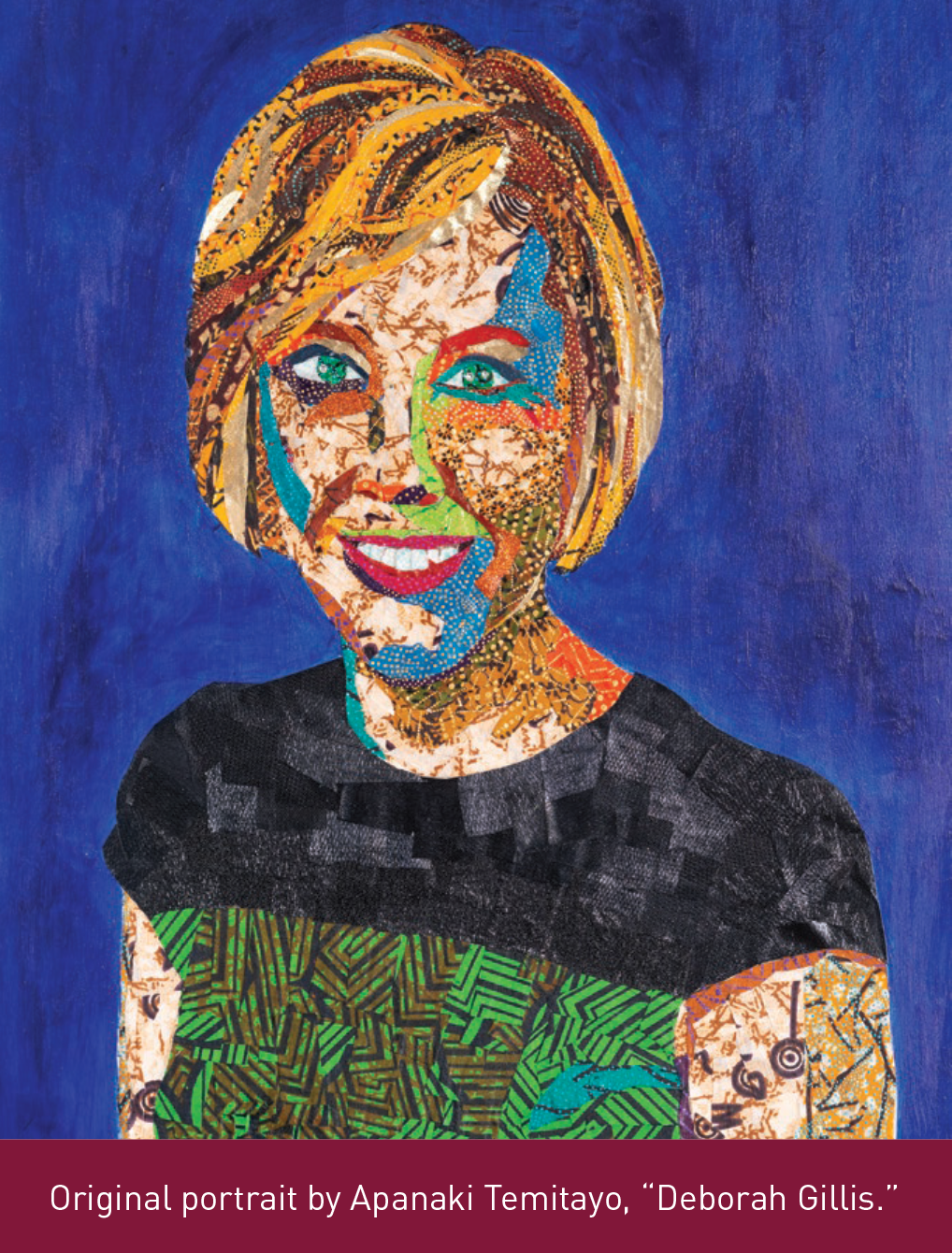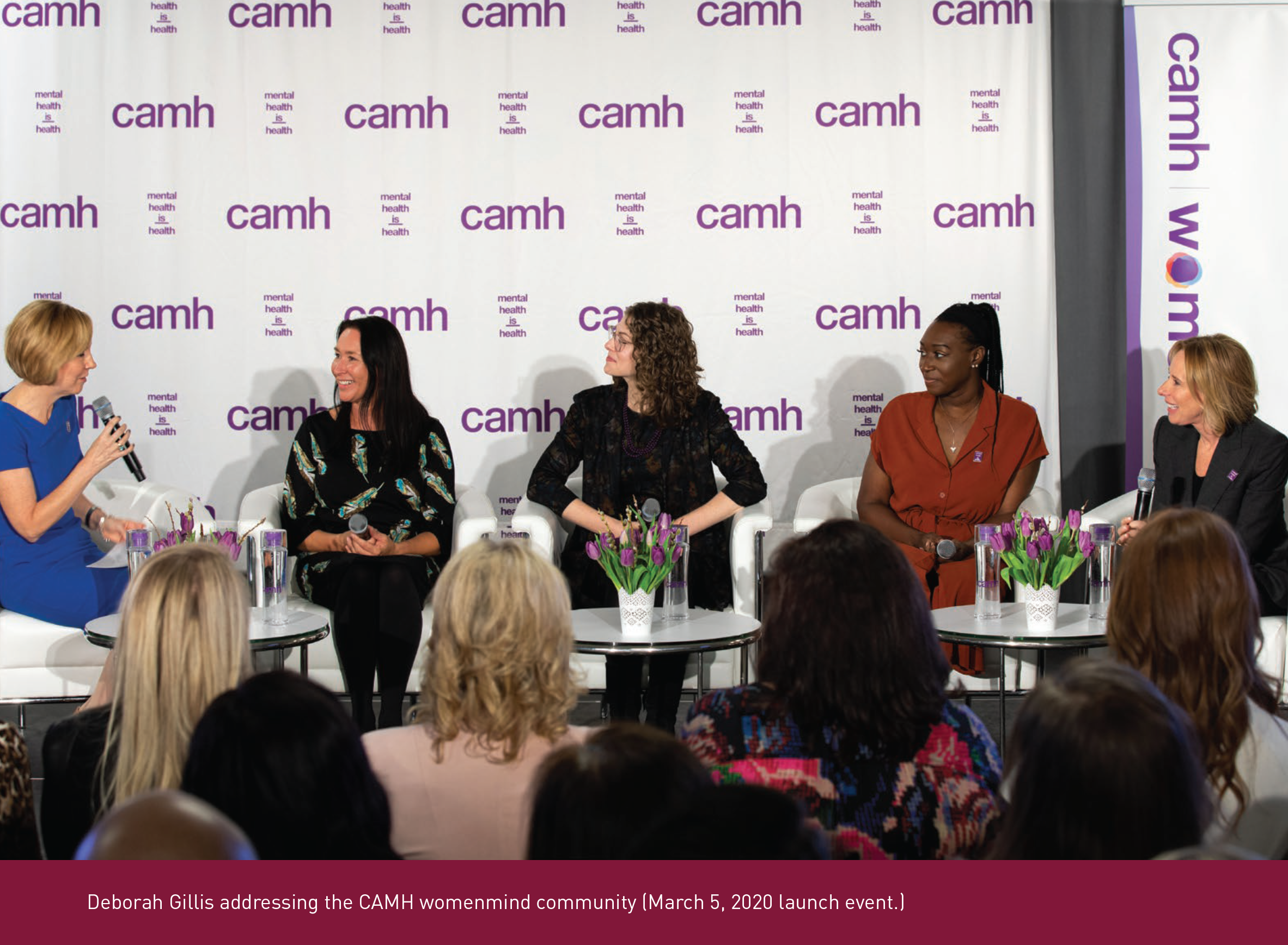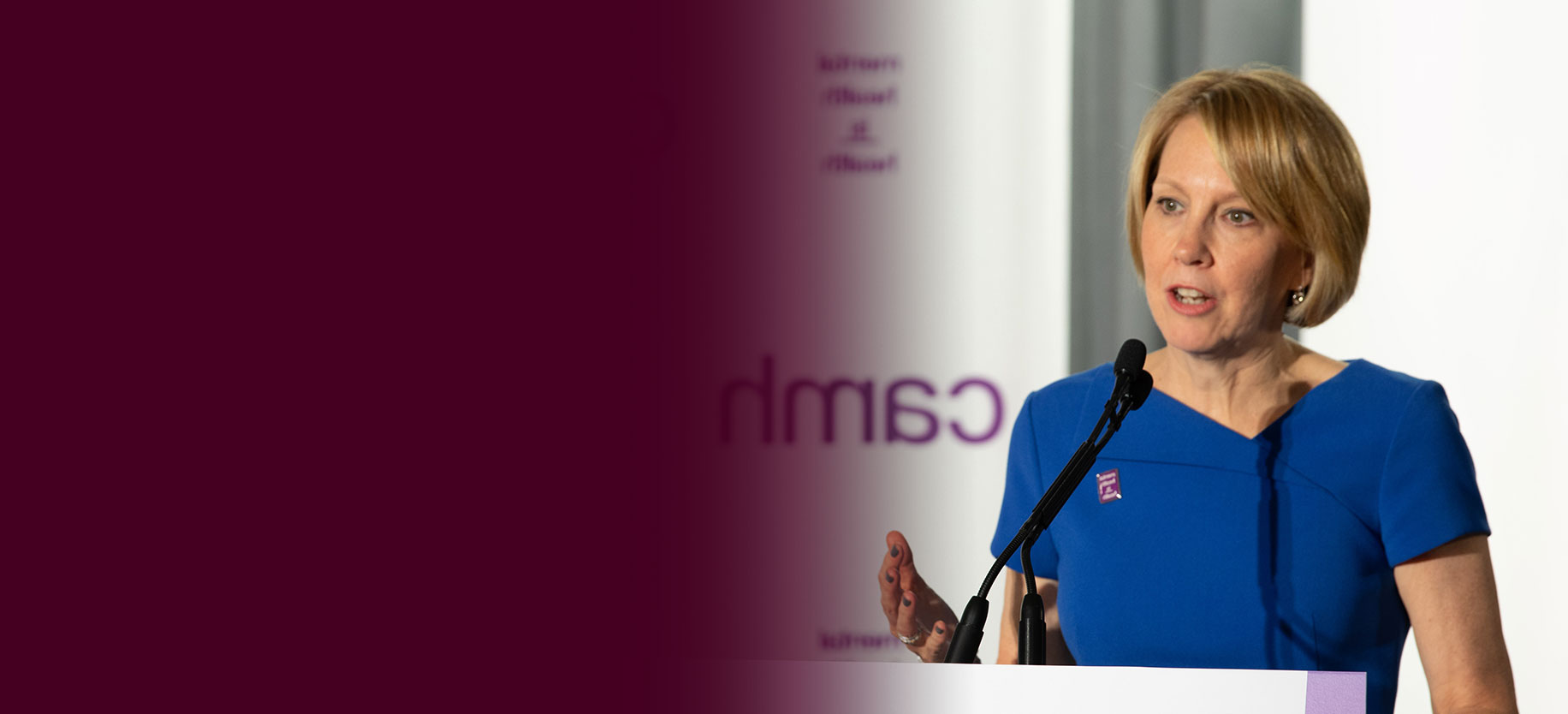In the fall of 2020, Burgundy Vice President Angela Bhutani sat down with Deborah Gillis, President & CEO of the Centre for Addiction and Mental Health (CAMH) Foundation. The highlights of their conversation around women and philanthropy are captured here.
Angela Bhutani (AB): Deborah, you have had an exceptional career that includes having led a company dedicated to the empowerment and inclusion of women in the corporate world. What motivates you to advocate for women?

Deborah Gillis (DG): It is rooted in a lot of different things in my life. When I was in my early days at Catalyst, I was cleaning out those boxes of stuff that one collects over the years and I found notes from my twelfth-grade debate, titled “Be it resolved that women earn the same as men.” I had one of those moments where I realized that that gender equality is an issue that has mattered to me since I was a 17-year-old girl. I later found myself in a position where my work and career were focused on ensuring that women have every opportunity to succeed and explore whatever career path they might wish, free of any barriers or stigma or stereotypes.
In the early days of my career, I worked in the public sector and much of my policy work had a social-justice an equity lens. I worked on legislation that put employment equity targets in place and a law that would have extended benefits to same-sex partners for the first time.
At one point I ran for public office and was out canvassing for votes. At one house, a mother came to the door with her daughter, who was probably six or seven years old. The mother explained why I was there, and the little girl looked up to me and said, “I thought only boys did that.”That was another pivotal moment for me because I recognized how important it is for girls and women to see other women in different roles.
These experiences, as well as being diagnosed and treated for breast cancer, led me to make a shift in my career to something that mattered deeply and personally. That is why I accepted a job at Catalyst, where I worked for 12 years in a global role that was focused on advancing women’s opportunities in workplaces and women’s advancement into leadership positions.
AB: In your role today as CEO of the CAMH Foundation, you champion mental health, raising awareness and funds. Can you comment on the donor experience when it comes to women who want to support the CAMH Foundation financially or in some other capacity?
DG: It varies. There are certainly many leading philanthropists in this country who are women with the means, opportunity and desire to support causes that they care about. And then there are also cases where women feel that their interests take a backseat to those of their partners. One colleague shared a story from another organization regarding a meeting with a high net worth couple about their interest in giving a gift. The fundraiser spent the entire time talking to the husband and largely ignoring his wife. At the end of that conversation, the couple said that they did not feel comfortable in proceeding. It was in fact the wife who was the decision-maker with respect to the philanthropic giving of the family, and she had been completely ignored during that conversation.
For me, this points to the importance of really encouraging women to embrace their role as philanthropists in making these decisions individually or collectively with their family.
AB: Why is it so important for women to be engaged in these conversations, particularly with your organization?
DG: The first reason is probably very familiar to you and your colleagues, Angela, and that is the wealth of women. Research shows that the share of financial wealth controlled by women will rise by up to 48 percent as women see an increased transfer of wealth, both generationally and from their spouses. An estimated $900 billion of wealth will move to women over the next decade, so the power and financial resources of women are significant.
I want to see women exercising their power in terms of the wealth that they have. But I would also encourage women to build their knowledge and comfort with philanthropic giving early on in their lives and their careers so that they exercise those muscles regularly. I would also encourage them to do that in a way that aligns their philanthropic giving with their personal priorities and interests, as well as areas where they feel they can have an impact.
“An estimated $900 billion of wealth will move to women over the next decade, so the power and financial resources of women are significant.”
AB: Based on your experience, do women approach philanthropic decision- making differently than men?
DG: There are lots of conversations about women and “giving circles”— women coming together to invest their money. For example, they put their money into a pot where their $5, combined with the $5 of 20 other women, has much more impact than it would have if they had each invested on their own. There is exponential growth that happens when you pool your resources, but there is also this sense of community that comes from women coming together to get behind a cause, make decisions collectively and support each other. That sense of community is unique to women and the ways that women give. It also shows that we invest in and care deeply about building long-term relationships, trust and connections. That is naturally how we connect and engage.
Women also want to bring families into the philanthropic process. We see that women want to support solutions to big problems and challenges they care about, identify with and see a need to solve. These are not just initiatives that support women or “women’s issues.” Women want to help solve problems or address issues that matter broadly and where they can have a significant impact.
We developed a program at CAMH Foundation called womenmind, which creates a community of women who support causes or issues of common interest. It is about investing in, supporting and lifting up women scientists. It helps address the fact that women’s careers are not always supported in the same way that men’s are. It also ensures that there is a gender lens brought to mental health research to recognize the different experiences that women have with mental health.

AB: What is the societal impact of greater engagement of women? Does equalizing the attention being paid to issues, causes and problems across a broader spectrum of society benefit women and men?
DG: Absolutely, both women and men. When we gather people of all colours, races, ethnicities, sexual orientation, genders and more around any table, we are going to have different conversations than if we all look and sound and think the same. Outcomes will be different if we bring the unique perspectives that we might each have, informed by our own life experiences, the things we have learned and the things we care about. Bringing together unique and diverse perspectives is important.
AB: When a family approaches you to discuss philanthropic giving, what sort of questions should they come prepared to have answered? Are there fundamental questions that families should discuss amongst themselves before coming to you?
DG: The starting point is getting an understanding of what that individual or family cares about. What kind of an impact do you hope to have? What inspires you to give? What will bring you joy? And when talking to organizations, you are looking for an alignment of values and interests.
Asking questions about the impact of your gift, how that will be measured and reported to you are important questions. The charity you are working with should be probing to understand what kind of information will be meaningful to you. Those are all important questions to explore because you are building a relationship. You are getting to know someone, and that is a process of creating trust, taking some risks, and looking at that person straight in the eye to gain a sense of what that relationship will be like.
AB: Relationship-building and community-building are very important in your work with womenmind. In creating this network of philanthropists, how do you allow women and their families to learn from one another?
DG: Mentorship is a core element of the program. Our hope is to build a community in the best sense of the word – a community of women who are in early stages of their careers or philanthropic giving, along with those who are much more experienced. We hope that these community members would also be giving and offering mentorship to the women scientists and researchers at CAMH whose efforts this philanthropy supports.
It all comes back to these fundamental issues we have talked about. When you create a community and bring women together, it creates a safe space for learning. It creates a place for women to see other women stepping up and taking leadership roles. That then empowers us to feel more confident. We are hoping to do this with womenmind and with the view of paying it forward to support other women, especially in their careers.
AB: This also involves taking ownership of the capital that we are increasingly receiving and earning as women— whether it is in a philanthropic capacity or planning your financial goals.
DG: Absolutely. To me, this is a question of embracing your power, setting up financial goals, and encouraging women to think about their philanthropic giving as one part of their financial plan. Women naturally have an interest in that kind of investment because it involves service to others, giving back, making a difference in communities and addressing issues that really matter to them.
This post is presented for illustrative and discussion purposes only. It is not intended to provide investment advice and does not consider unique objectives, constraints or financial needs. Under no circumstances does this post suggest that you should time the market in any way or make investment decisions based on the content. Select securities may be used as examples to illustrate Burgundy’s investment philosophy. Burgundy funds or portfolios may or may not hold such securities for the whole demonstrated period. Investors are advised that their investments are not guaranteed, their values change frequently and past performance may not be repeated. This post is not intended as an offer to invest in any investment strategy presented by Burgundy. The information contained in this post is the opinion of Burgundy Asset Management and/or its employees as of the date of the post and is subject to change without notice. Please refer to the Legal section of this website for additional information.

